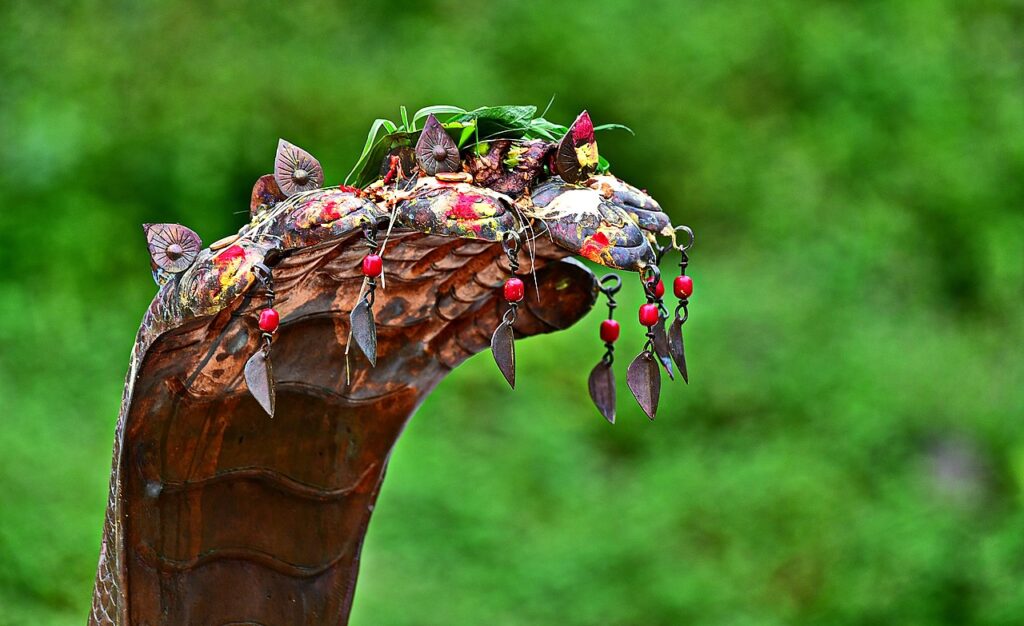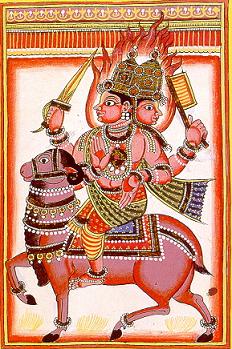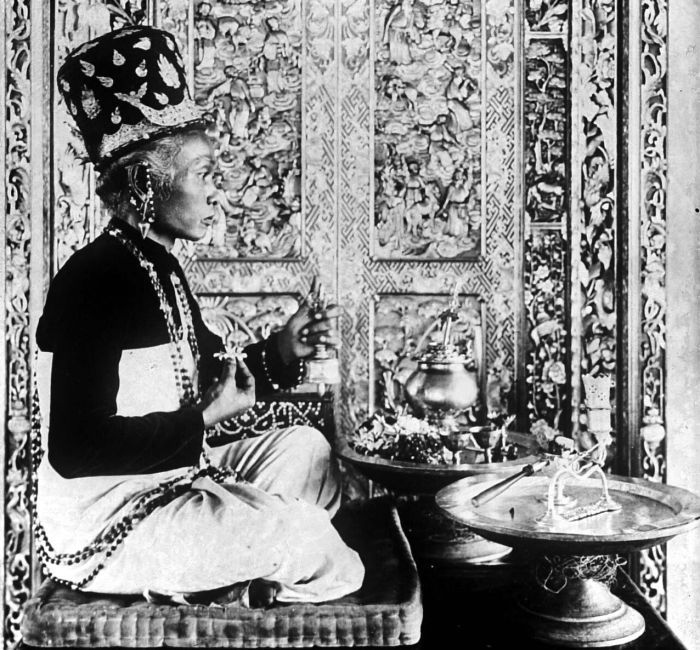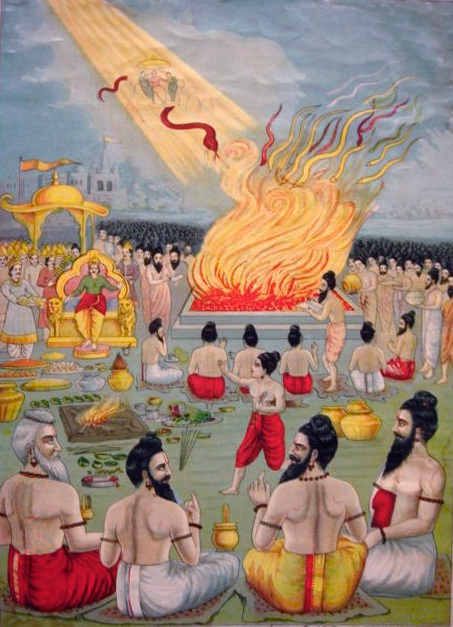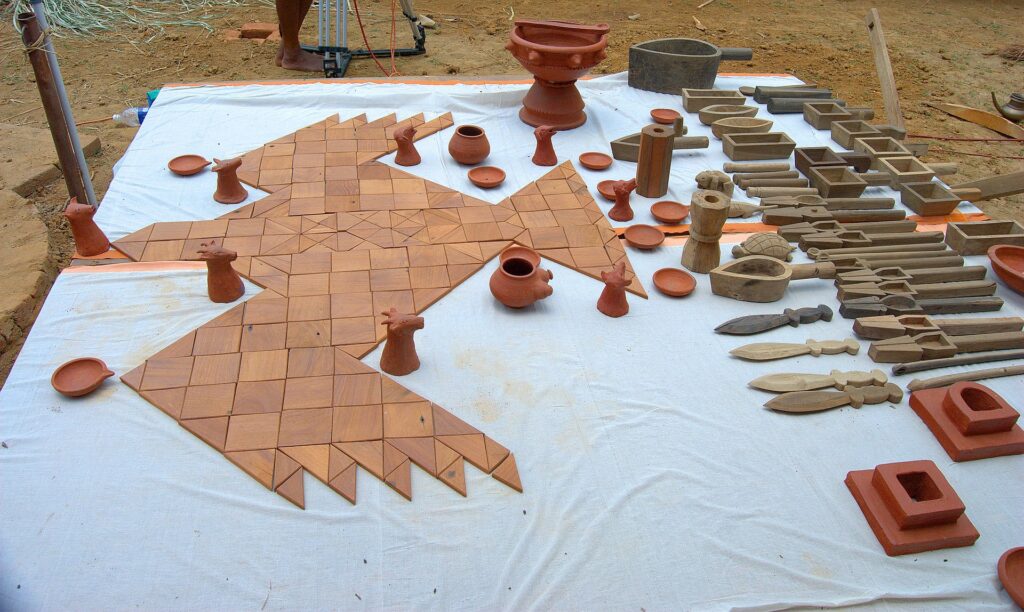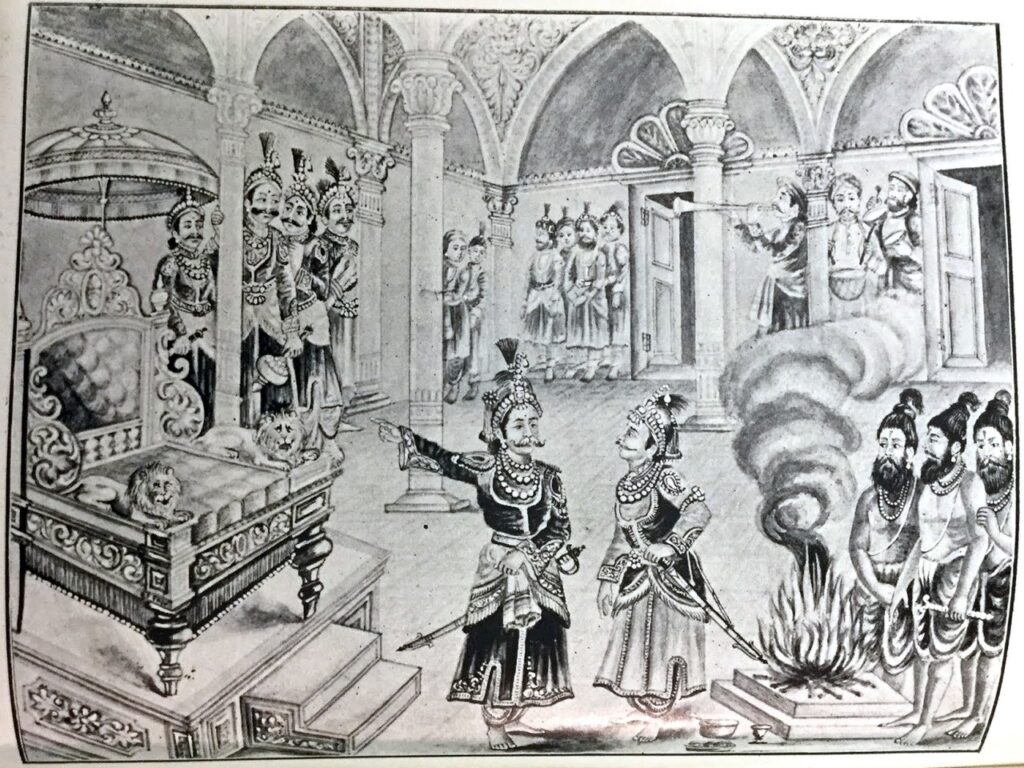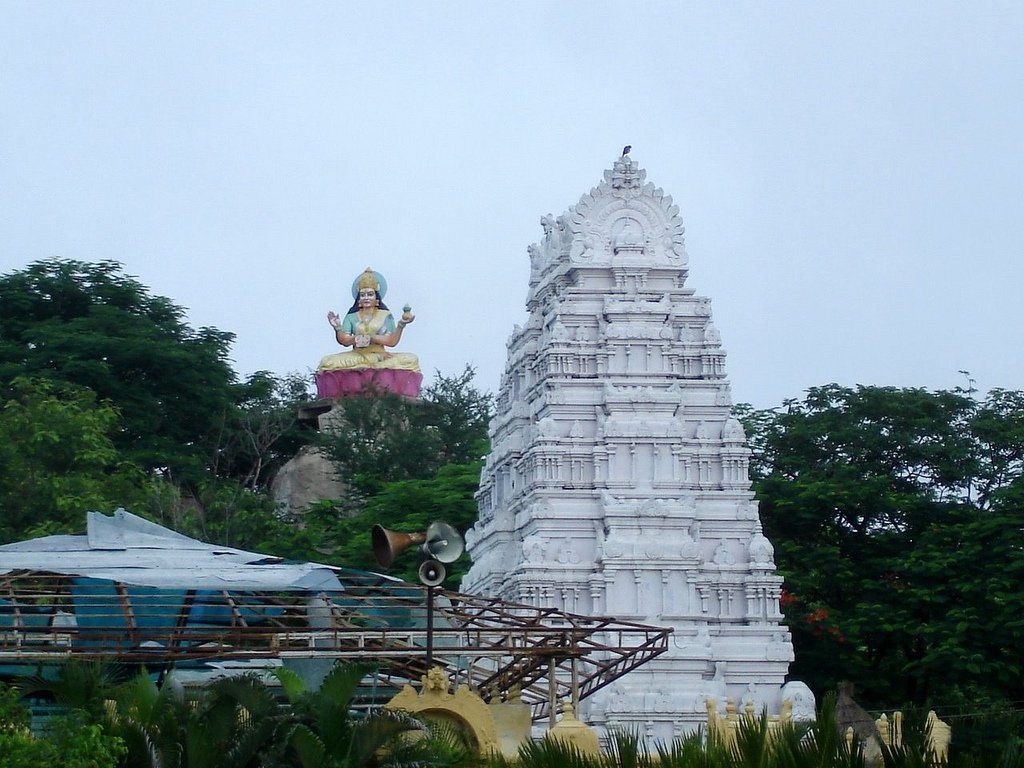
Table of Contents (The Complete Mahabharata in Simple English)
Previous Post: Names of the Snakes Who Perished in the Sacrifice
| Note: This post marks the beginning of the Adivansavatarana sub-parva of the Adi Parva of the Mahabharata. |
After hearing the complete account of Astika’s birth and how he saved the serpents in the snake sacrifice, Saunaka Kulapati said to Sauti, “O son, you have pleased me by narrating this wonderful and extensive history beginning with Bhrigu’s child. O son, I am very keen to listen to the history composed by Vyasa and the wonderful stories narrated by the sadasyas present at Janamejaya’s snake sacrifice. I have been told the sacrifice lasted for a long time and many stories were narrated in the intervals during the yagna. O son, tell me all those stories.”
Sauti replied, “O noble-souled one, the brahmanas discussed many topics based on the Vedas and Rishi Vyasa recited the great history called Bharat.”
Saunaka said, “I wish to hear the great history that describes the glories of the Pandavas. That history was born from the ocean-like mind of that noble rishi, Krishna-Dwaipayana Vyasa, whose soul has been purified by yoga. O son of Suta, narrate that history called the Mahabharata to me. I am very eager to hear it.”
| Note: Sauti began his narration with Rishi Vyasa’s birth. The following words were spoken by Sauti to the ascetics of Naimisha forest. |
Krishna-Dwaipayana Vyasa was born on an island in the Yamuna river. His mother was the virgin, Kali, and his father was Sakti’s son, Parasara. As soon as he was born, Vyasa used his will-power to develop his mental and physical faculties. He then went on to master the Vedas and their branches and all the histories.
Many people practice asceticism, study the Vedas, adhere to vows and fasts, give birth to progeny, perform sacrifices, and yet, certain spiritual blessings stay out of reach for them. However, Rishi Vyasa easily obtained the thing that was out of reach for these people.
This brahmana rishi, Krishna-Dwaipayana, cherished the truth. He was holy. With knowledge of the supreme Brahma, he could intuit the past.
With this wisdom and knowledge, Vyasa divided the Vedas into four parts.
| Note: Each of the four Vedas (Rig, Yajur, Sama, and Atharva) are divided into four layers. Here, the Mahabharata is pointing to the four layers. These layers are the Samhitas, Aranyakas, Brahmanas, and Upanishads. The Samhitas are the most ancient layer of the Vedas. They contain mantras, stotras, and blessings. The Aranyakas contain details about rituals, ceremonies, and sacrifices. The Brahmanas contain commentaries about the rituals, ceremonies, and sacrifices. The Upanishads focus on spiritual knowledge, meditation, and philosophy. |
Rishi Vyasa, the sage of sacred deeds and enormous fame, later fathered three sons: Pandu, Dhritarashtra, and Vidur in order to continue Raja Shantanu’s line.
When Rishi Vyasa found out that Raja Janamejaya was installed as the chief priest in his snake sacrifice, he and his disciples went to the sacrificial pavilion. There they saw the royal sage Raja Janamejaya surrounded by sadasyas, ritwiks, and kings from various countries. This scene reminded them of the splendour of Devaraja Indra as he sat in heaven surrounded by devas and learned sages.
When Janamejaya saw Rishi Vyasa arrive at the sacrifice, he arose with great speed and joy, along with his relatives and followers, to welcome the great rishi. After paying him due respect, Janamejaya sought approval from the sadasyas to give Rishi Vyasa a golden seat. The sadasyas readily agreed to this noble gesture which was similar to the gesture Indra had once made to Brihaspati.
Once Vyasa was seated on his golden seat, all the kings worshipped him according to the rites laid down in the scriptures. Then Janamejaya offered Sage Vyasa water to wash his feet and mouth. He also gave arghya` and cattle to the sage. Vyasa was pleased by everyone’s conduct. He accepted the gifts and commanded that the cattle should not be slain.
| Note: Wikipedia describes ‘Arghya’ as an offering of water, Durva, flowers, and raw grain. In ancient times, arghya was given to a guest as a sign of respect and welcome. |
After adoring the sage, Janamejaya bowed to his ancestor (Vyasa Muni was his great-great-grandfather) and inquired about his health. Rishi Vyasa also inquired about the king’s welfare. After that, Rishi Vyasa worshipped the sadasyas just as they had worshipped him some time back.
Janamejaya, along with all the sadasyas, folded their palms and said to Vyasa Muni, “O brahmana, you have witnessed the events that happened in the lives of the Kurus and the Pandavas. We are eager to hear that history from you. What caused the disagreement between them? These were great souls, yet why did they engage in a battle of such a great proportion? Were their minds clouded by fate? O great brahmana, tell us everything that happened in connection with these events.”
Rishi Vyasa looked at his disciple seated next to him and said, “O Vaishampayana, you have heard me narrate the story of Bharata. I would like you to narrate the entire story to the sadasyas and the chiefs assembled here.”
Vaishampayana replied respectfully, “I begin by bowing to my guru (Rishi Vyasa) with reverence and devotion and with the eight parts of my body touching the ground. I also worship with all my heart, the entire assembly of brahmanas and learned people assembled here.”
Vaishampayana then looked at Janamejaya and said, “O king, you are fit (in mind and soul) to hear this great history. I shall recite the history called Bharata as I have heard it from my high-souled guru. O king, I will tell you why disagreements arose between the Kurus and the Pandavas. I will speak about why the Pandavas were exiled after the game of dice by the Kauravas who desired to rule the entire kingdom. I shall tell you everything, O noble king of the Bharata race.”
| Note: In the next post, Rishi Vauishampayana sets the foundation for reciting the story of the Kurus. |
Table of Contents (The Complete Mahabharata in Simple English)
Next Post: Rishi Vaishampayana Sets the Stage With a Brief Story of the Pandavas





